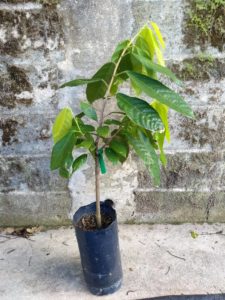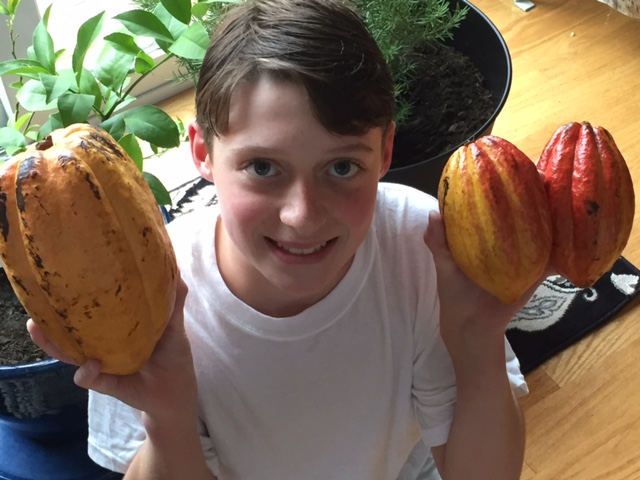So, you just got your fresh cacao fruits and want to grow trees, what now?
Freshly harvested cacao fruits can be stored in a cool (not refrigerated), dark place and remain in good condition with viable seeds for at least 1-2 weeks. After about one week in storage, the fruit may begin to turn brown and the seeds may begin to get moldy, but if they are still firm the fungus in only external and shouldn’t affect the germination. However, the sooner they can be planted, the higher the viability.
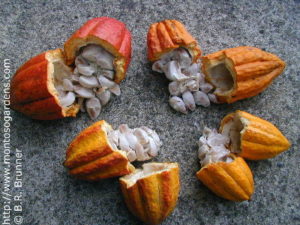
Break open the hard outer shell of the cacao fruit by hitting it against a hard surface (like a concrete floor or step), or carefully cut through with a large, sharp knife, but avoid cutting into the seeds. Cacao seeds are covered with a delicious, sweet-sour edible pulp, but some varieties have more pulp than others, and overripe fruits may have dried out pulp or even sprouted seeds.
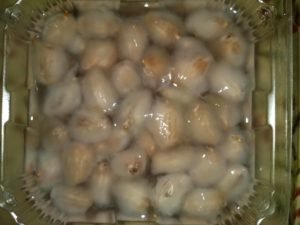
After sucking the edible pulp from the seeds, place them in a shallow container and barely cover them with water. Wash the seeds daily under running water, gently rubbing them to remove the loosened remaining pulp, and change the water in the container. After about 3-4 days, a white root will begin to emerge from the wide end of the seed. Even if the seeds are not totally clean of remaining pulp, they are ready to be planted.
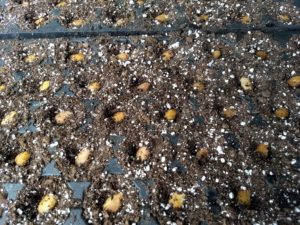
Cacao seeds are fleshy and rot easily if kept too wet. They should be planted flat or at an angle with the root end down and left uncovered. The mix needs to be well drained, with at least 50% perlite or coarse sand, and should be maintained uniformly moist but not waterlogged.
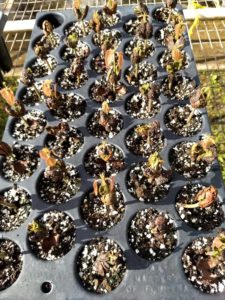
The germinating seeds should be kept warm (around 70-90F) and under approximately 50-70% shade. Germination takes 2-3 weeks. The cotyledons will turn greenish and be lifted up as the developing stem straightens and lengthens, then the shoot will appear from between the cotyledons. Sometimes the seed hull doesn’t fall off by itself and needs to be carefully removed in order to allow the shoot to emerge.
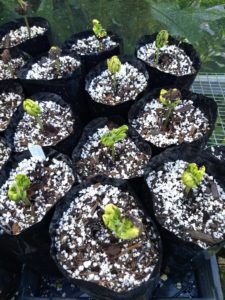
The seeds can be planted in small pots or cell trays, or directly in larger pots or grow bags, but in larger containers there is a danger of overwatering. Another advantage with smaller containers is that ungerminated or rotted seeds, and abnormal seedlings can be discarded when transplanting to larger containers.
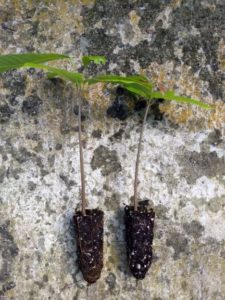
The young trees should be maintained under 30-50% shade and watered as necessary to maintain even moisture without excess. Fertilize the trees every 2-3 months with a dilute solution of 20-20-20, fish emulsion or equivalent, or use a moderate amount of slow release fertilizer.
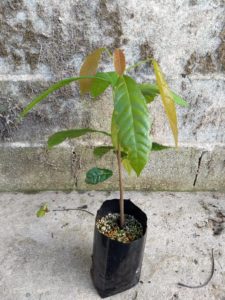
At approximately 10-12 months of age, the trees are ready to be grafted, planted out in the field, or moved to a larger container.
